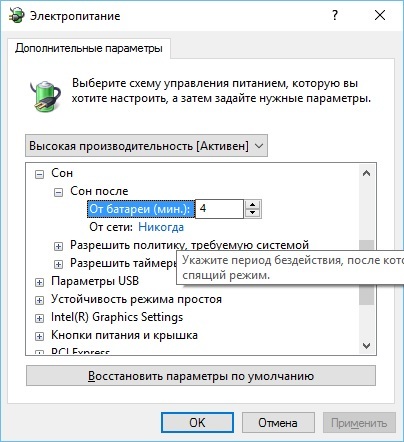Answer the question
In order to leave comments, you need to log in
Hibernation for SSD: harmful, beneficial or neutral?
I welcome everyone!
Not so long ago I bought a glorious ~ 256 GB Samsung 850 Pro SSD, connected it to the SATA III port via the AHCI mode of my laptop, and installed a ~ 700 GB hard drive using a sled in place of the DVD drive to SATA II IDE. It turned out to be a good bunch of ~ 900 GB (taking into account the Over-Provisioning 25% I installed on the SSD). Everything works, it would seem, not bad, but I ran into a number of issues. Two of these are the effect of sleep/shutdown on an SSD.
Interested in the following points in the Windows power schemes:
1. Sleep after... Tobish normal sleep in Windows, hibernation is not used (disabled via the command line). 
2. Turning off the hard drive (or even SSD) after a specified period of time.
As far as I know, AHCI means support for high performance modes and low power modes, but the SATA II port of my laptop does not support AHCI mode, and, accordingly, a hard drive with this type of connection does not have a low power mode and for it this issue may well be reasonable. So how to be? Is there any detriment to stability, reliability, longevity, or performance in the top two lists for SSDs? Is there any benefit from them in this bunch of SSD + HDD? Or is it debatable?
PS The reason for the question is articles on various resources that recommend completely disabling sleep mode. One of the reasons for such a solution is the work of TRIM during inactivity. Isn't it dangerous for the safety of data to turn off the power of the SSD using Windows during such operations?
PSS Information about the current configuration of my laptop is available below.
ASUS Q500A
Windows 7 x64 Ultimate, Windows 10 x64 (2 systems)
Screen: 15.6" (1366x768), LED, glossy, non-touch.
Chipset: Intel HM76
CPU: Intel Core i5 3230M (2\4x2.6 Ghz)
GPU: Intel HD Graphics 4000
RAM: 8 Gb (DIMM1: SK Hynix HMT351S6CFR8C-PB 4GB 800MHz, DIMM3: Samsung M471B5273DH0-CH9 4GB 667MHz 9-9-9-24)
SSD: 256 GB Samsung 850 Pro
HDD: 750 GB Hitachi HTS547575A9E384 GPT
WiFi+Bluetooth: Intel Centrino(R) Wireless-N 2230
Audio: Realtek ALC269
Ethernet: Realtek RTL8168
WebCamera: Asus (USB\VID_1BCF&PID_2883&REV_0429&MI_00)
DVD+/-RW: MATSHITA DVD-ATA Device
Card UJ8C2 Reader: available (did not find information)
Answer the question
In order to leave comments, you need to log in
It is not dangerous, not harmful, and not helpful.
But there is not much point in this - the SSD is in sleep mode most of the time, unlike the HDD, it does not need to turn the pancakes.
Therefore, when the SSD is not being used, it already has minimal power consumption.
Well, garbage collection goes just during downtime. Therefore, he will have less time for the work of the garbage collector - and this is both trim and cell reassignment.
Didn't find what you were looking for?
Ask your questionAsk a Question
731 491 924 answers to any question